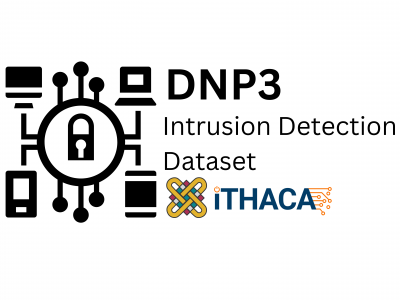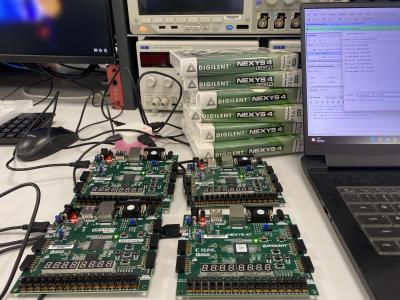Security
In the digital era of the Industrial Internet of Things (IIoT), the conventional Critical Infrastructures (CIs) are transformed into smart environments with multiple benefits, such as pervasive control, self-monitoring and self-healing. However, this evolution is characterised by several cyberthreats due to the necessary presence of insecure technologies. DNP3 is an industrial communication protocol which is widely adopted in the CIs of the US. In particular, DNP3 allows the remote communication between Industrial Control Systems (ICS) and Supervisory Control and Data Acquisition (SCADA).
- Categories:
 5284 Views
5284 ViewsThis dataset is in support of my research paper - Short Circuit Analysis of 666 Wh Li-Ion NMC
Faults and datasets can be copied to submit in fire cause investigation reports or thesis. The simulation is run for 20 hours (72000 seconds) of simulation time for each fault of 100 faults.
PrePrint : (Make sure you have read Caution.)
- Categories:
 2454 Views
2454 ViewsBlockchain technology is widely used in data asset transactions. Especially for the private data of the public, such data cannot be circulated to unauthorized receivers, it is necessary to ensure that the transaction records and data contents can be audited and traced. In this paper, based on bilinear mapping, we construct a triple receiver public key encryption scheme as a regulatable data asset transaction mechanism, and construct a blockchain data asset transaction platform, namely Digital Asset Exchange Protocol.
- Categories:
 Views
ViewsBlockchain technology is widely used in data asset transactions. Especially for the private data of the public, such data cannot be circulated to unauthorized receivers, it is necessary to ensure that the transaction records and data contents can be audited and traced. In this paper, based on bilinear mapping, we construct a triple receiver public key encryption scheme as a regulatable data asset transaction mechanism, and construct a blockchain data asset transaction platform, namely Digital Asset Exchange Protocol.
- Categories:
 Views
ViewsBlockchain technology is widely used in data asset transactions. Especially for the private data of the public, such data cannot be circulated to unauthorized receivers, it is necessary to ensure that the transaction records and data contents can be audited and traced. In this paper, based on bilinear mapping, we construct a triple receiver public key encryption scheme as a regulatable data asset transaction mechanism, and construct a blockchain data asset transaction platform, namely Digital Asset Exchange Protocol.
- Categories:
 193 Views
193 ViewsBlockchain technology is widely used in data asset transactions. Especially for the private data of the public, such data cannot be circulated to unauthorized receivers, it is necessary to ensure that the transaction records and data contents can be audited and traced. In this paper, based on bilinear mapping, we construct a triple receiver public key encryption scheme as a regulatable data asset transaction mechanism, and construct a blockchain data asset transaction platform, namely Digital Asset Exchange Protocol.
- Categories:
 Views
ViewsBlockchain technology is widely used in data asset transactions. Especially for the private data of the public, such data cannot be circulated to unauthorized receivers, it is necessary to ensure that the transaction records and data contents can be audited and traced. In this paper, based on bilinear mapping, we construct a triple receiver public key encryption scheme as a regulatable data asset transaction mechanism, and construct a blockchain data asset transaction platform, namely Digital Asset Exchange Protocol.
- Categories:
 Views
ViewsBlockchain technology is widely used in data asset transactions. Especially for the private data of the public, such data cannot be circulated to unauthorized receivers, it is necessary to ensure that the transaction records and data contents can be audited and traced. In this paper, based on bilinear mapping, we construct a triple receiver public key encryption scheme as a regulatable data asset transaction mechanism, and construct a blockchain data asset transaction platform, namely Digital Asset Exchange Protocol.
- Categories:
 62 Views
62 Views



